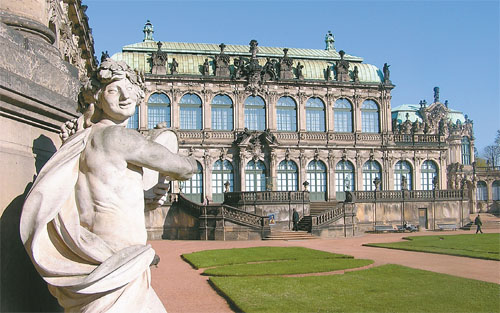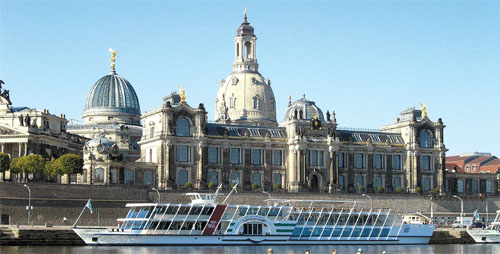[Sponsored Report] A jewel of Germany reborn

Zwinger houses one of Dresden’s most spectacular art collections in a magnificent baroque building erected in 1709.
In the 18th century it was a magnificent center of European politics, culture and economic development, only to become a synonym for apocalyptic destruction just 200 years later. Dresden has always been a unique city, provoking a fascination that has evolved over a turbulent history.
In 1951, three years after the founding of the GDR, the East German Lander were dissolved and replaced by smaller regions. Dresden became a regional capital. Life in the city was determined by the doctrines of socialism. Despite considerable efforts, the city saw only limited success in regaining its former industrial status. Still, nine colleges were able to secure the city’s scientific profile. Important cultural traditions were maintained. The Kreuzchor choir and the Staatskapelle orchestra, the Palucca school of dance and the State Art Collections all enjoyed international renown.
The peaceful revolution which heralded the end of socialism also had roots in Dresden, starting with mass demonstrations at the beginning of October 1989. The so-called “Group of 20” was able to force the authorities into dialogue with the opposition. The peaceful occupation of the State Security headquarters followed in December. After unification, the city regained its former status as capital of the Free State of Saxony. Extensive construction has in the meantime transformed Dresden, on the way to becoming one of Germany’s most attractive cities.

The Frauenkirche (Church of Our Lady) is one of Dresden’s most important historical landmarks.
Dresden has also evolved into a dynamic city of business and science, demonstrated by the city’s successful businesses, continuous growth, rising sales, decreasing unemployment, growing purchasing power and top rankings in studies.
The city’s economy has a wide base, centering on three future-oriented fields: microelectronics and information and communication technology; nanotechnology and new materials, and life sciences and biotechnology. Dresden also has an exceptional concentration of research institutions. Fifty-five percent of the city’s motivated and qualified employees work in the high-tech sector. Dresden’s Economic Development Department works tirelessly to keep this trend going. Supply-oriented development of industrial and commercial zones, construction and expansion of business and technology centers, modernization and improvement of infrastructure, fast approval times and individual consulting are only a few of the benefits available.
The city also has a high quality of life, with world-famous art treasures and a vibrant cultural scene, daycare for children and recreational options for the entire family. All the theaters were destroyed during the Second World War, but today fans can choose from a diverse program at the famous Semper Opera House, home of the Saxon State Oper. Those who prefer light musical entertainment can visit the Dresden State Operetta, while the Dresden Staatsschauspiel provides a wide range of drama.
The Dresden Frauenkirche, a masterpiece of European architecture, was a central element of the city skyline for over 200 years. The church was built between 1726 and 1743, under the supervision of George Bahr, but it was destroyed in bomb raids in February 1945. Its reconstruction was blocked by politics, and so the church remained in ruins for many decades. But finally, on the last Sunday of October 2005, the bells of the Frauenkirche rang out again.
It was the sound of Dresden’s rebirth - and all are invited to enjoy this once-more beautiful city.










with the Korea JoongAng Daily
To write comments, please log in to one of the accounts.
Standards Board Policy (0/250자)